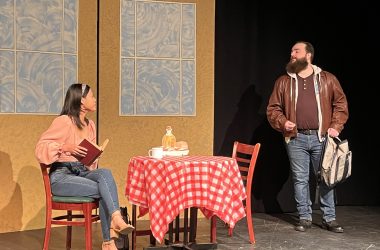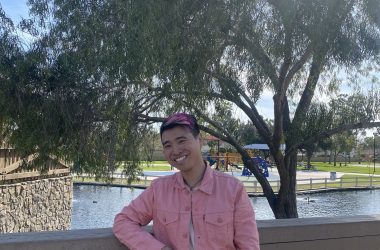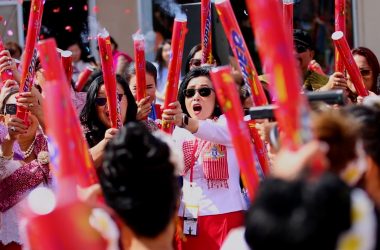The two new exhibits at the University Art Museum (UAM) at Cal State Long Beach are bound to fascinate and intrigue visitors who are willing to take an hour out of their busy day to investigate this free campus attraction.
The first exhibit, Fantasy Islands: Landscaping Long Beach’s Oil Platforms, shows design drawings and landscaping of four oil-drilling platforms built between 1965 and 1968 in the Long Beach Harbor.
These man-made islands off the coast were designed to be better looking than they actually are. This exhibit demonstrates the process of how designers were able to make Long Beach’s oil islands more pleasing to all who pass by.
The islands were camouflaged with waterfalls, palm trees and shrubs. Behind them were brightly colored concrete walls and tall towers that, as many notice while walking along Ocean Boulevard, are lit up at night.
This selection of artwork will probably find more historically interesting than aesthetically pleasing. However, many will probably find the aerial shots of downtown Long Beach some 50 years ago interesting.
But, knowing the attention span of most college students, a perusal of Fantasy Islands will undoubtedly be cut short when they notice the gigantic green pyramid of polypropylene plastic berry baskets in the center of the museum.
Yes, you read that correctly. Currently in the center of the UAM are many, many green plastic berry baskets rising over six feet high, which is taller than most of the world’s population.
The plastic pyramid, which was recently also displayed in Mexico City, is named Pirámde del Sol: a monument to invisible labor. According to the museum, “The work compares the labor essential to the construction of the ancient Pyramid of the Sun at Teotihuacan to the picking of millions of strawberries in California.”
The pyramid is by Louis Hock and is part of the second exhibit at the UAM called Constructed Evidence: Work by Louis Hock, 2000-2006. Hock’s works were both impressive and varied.
After any initial fascination of the gigantic pyramid is worn off, be sure to check out the Nightscope Series surrounding the pyramid. The Nightscope Series are photographs taken using a night vision camera with a thermal imaging device. The device shows the body heat of whoever is in front of the camera, and in this case, the bodies were people crossing the U.S.-Mexican border at night.
The result is a green body surrounded by an eerie darkness – a small artistic reminder of recent news topics.
Another work by Hock is Shelter. Shelter looks like a greenhouse, but with one huge difference: It’s covered with 620 identical images of Jesus Christ and has a stool in the middle. The images were taken from the Shroud of Turin, a biblical artifact and phenomenon that has a pretty cool history of its own.
The third work of the Hock exhibit is American Desert, which constitutes several pieces in one presentation. According to the museum, Hock’s American Desert “explores the significance, both iconic and sublime, of the desert in America’s cultural consciousness.”
American Desert is full of different multimedia that are a nice representation of what art can do with 21st century technology like digital video and surround sound speakers.
One notable example is a video projected onto sand that’s actually from White Sands, N.M., a city near where the first U.S.-made nuclear weapon was detonated. Another video loops desert images from “Roadrunner” cartoons.
All in all, there’s something for everyone at the new exhibits at the UAM. Best of all, visiting it is free and it’s closer than the Louvre.




